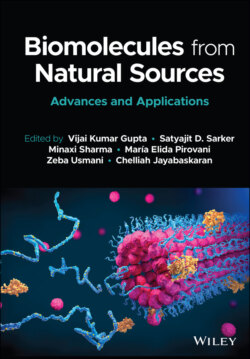Читать книгу Biomolecules from Natural Sources - Группа авторов - Страница 71
2.4.8 Glucan
ОглавлениеA common source for glucan is baker’s yeast, Saccharomyces cerevisiae, although it is also found in some other sources (bacteria, fungi, lichen, and higher plants, such as, barley). Large supplies of inexpensive yeast are available from both the baking and the brewing (brewer’s yeast) industries. Glucans are the most abundant polymers in yeast, making up approximately 12–14% of the total dry cell weight. Glucan is readily purified from yeast cells by using hot alkali treatment to remove all other cellular materials, thereby allowing recovery of the insoluble glucan material. Yeast glucan particles purified by this method contain both HMW and lower molecular weight polymers. Glucan is used as an immunosuppressive [185]. Glucan has been modified and applied in different applications such as hydrogels [32, 186], and a potential prebiotic [187], in supporting the treatment of viruses [188] and many others. Although glucans are being exploited mainly for their antitumor, anti-infectious, and radioprotective properties, they also have non-medical applications. Glucans resist breakdown when attacked by digestive enzymes, and thus can be used as non-caloric food thickeners. Other possible applications include use in sustained-release tablets, encapsulation of oxygen for mass transfer in fermentation reactions, and as a solid support material for chromatographic separations [189–193].
